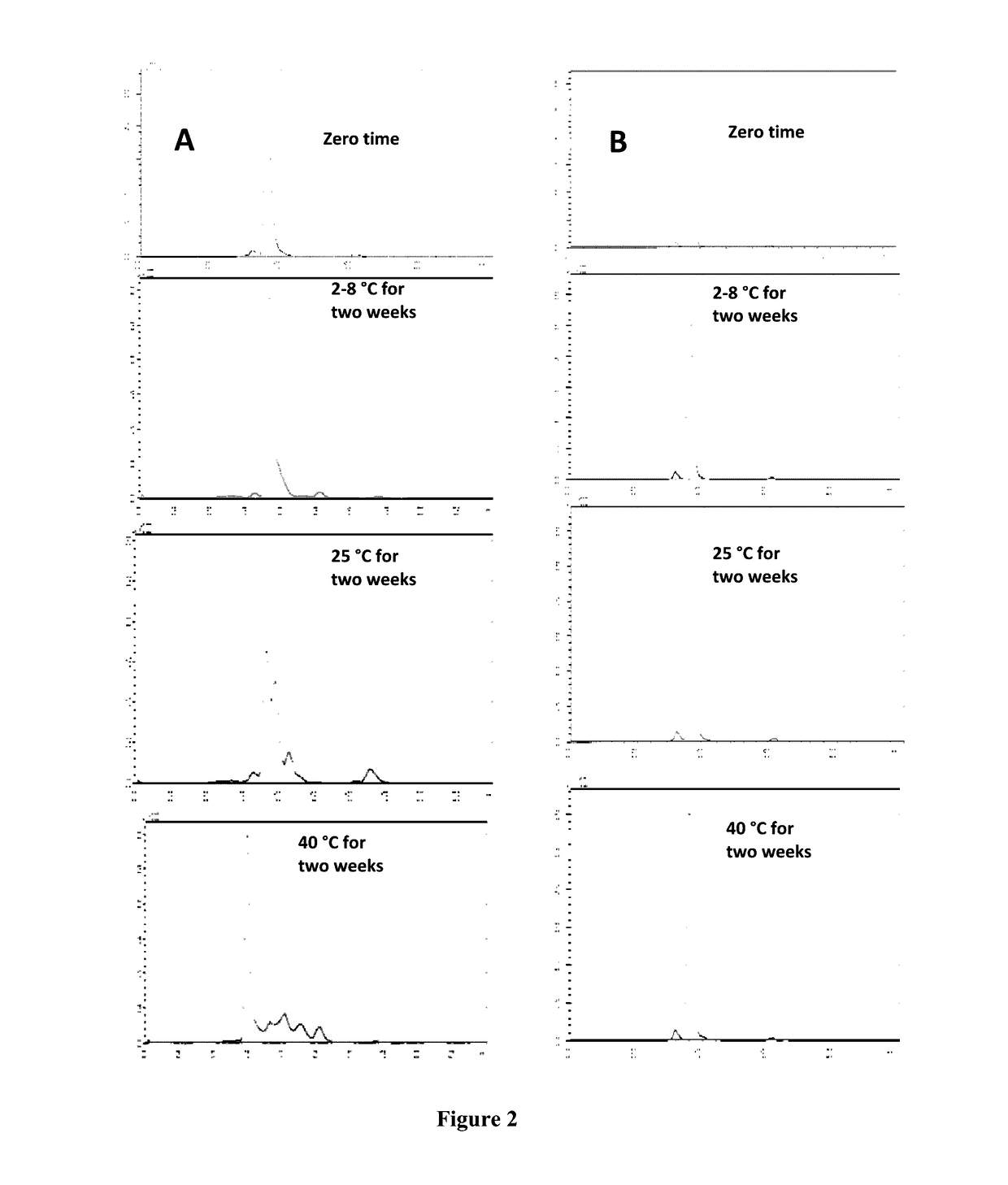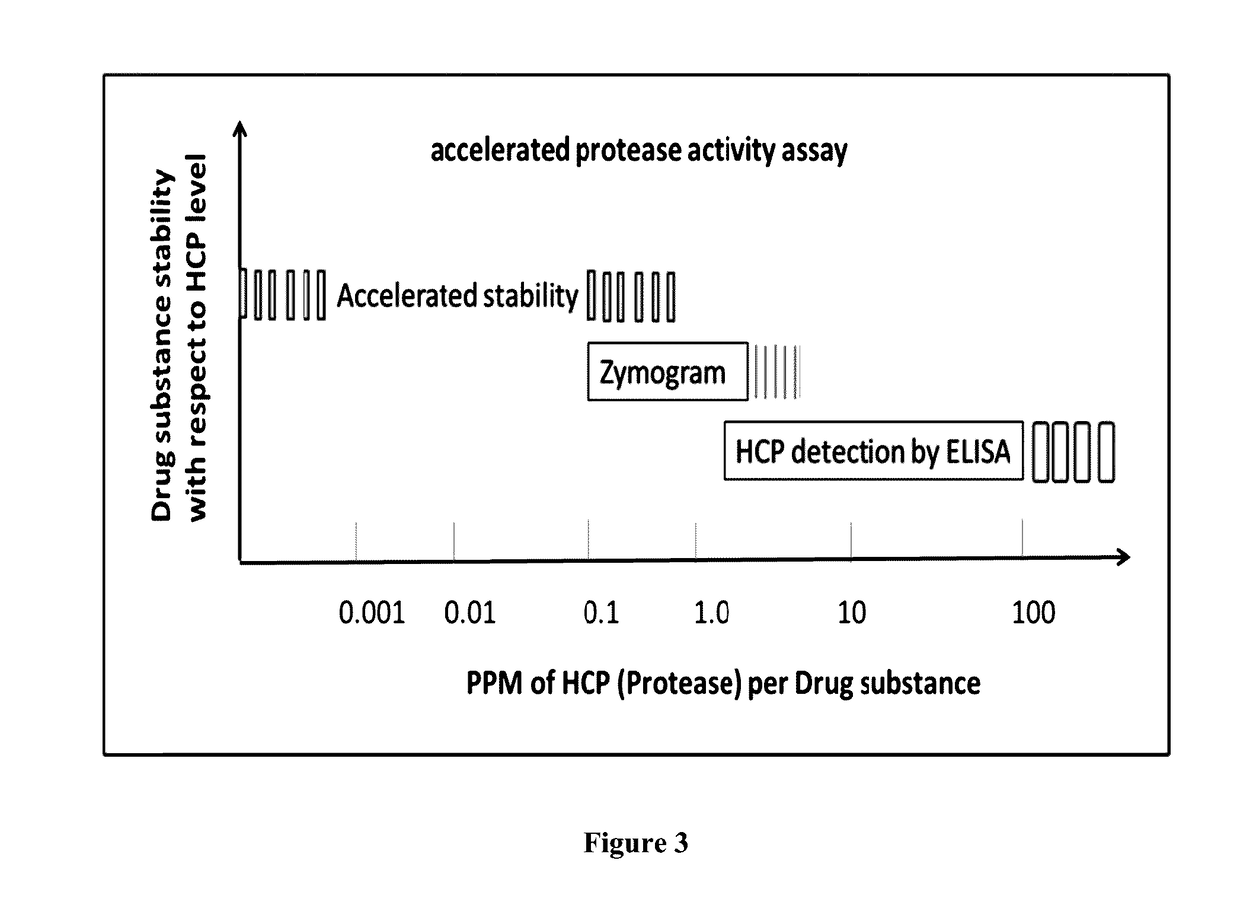Process for the purification of tnfr:fc fusion protein
a fusion protein and purification process technology, applied in the field of fusion protein purification, can solve the problems of affecting the long term stability and quality of the protein-of-interest, and general purification processes often fail to adequately purify the protein-of-interest from the process-related impurities, so as to reduce the hcp impurities containing and the effect of reducing the hcp impurities
- Summary
- Abstract
- Description
- Claims
- Application Information
AI Technical Summary
Benefits of technology
Problems solved by technology
Method used
Image
Examples
example 1
[0153]Etanercept Purification by using Protein A Chromatography
[0154]The clarified harvested cell culture fluid (HCCF) was pre-conditioned by adjusting the pH to 8.2-9.2. The pre-conditioned HCCF was loaded onto a protein A chromatography (MabSelect Sure LX, GE Healthcare). The column was pre-equilibrated with equilibration buffer (50 mM Tris-Cl buffer). Intermediate washes were carried out by wash buffer 1 (50 mM Tris, 1.5 M urea, 1.5% tween 80 and 7.5% isopropanol, 1 M NaCl and 5 mM EDTA, pH 8.5) and wash buffer 2 (50 mM trisodium citrate dehydrate buffer, pH 4.5) and finally Etanercept was eluted in 50 mM trisodium citrate dehydrate buffer, pH 3.5.
example 2
[0155]Etanercept Purification by using Protein A Chromatography
[0156]The 0.2 micron filtered clarified harvest cell culture fluid (HCCF) is and then pH adjusted to 8.5±0.2 with 2 M Tris base just before loading onto the affinity column. The pH adjusted solution is loaded at 100 cm / hr onto Protein A (MabSelect Sure LX, GE Healthcare) column with a bed height of 20 cm (dynamic binding capacity: Not more than 17 mg of etanercept per ml of resin), pre-equilibrated with equilibration buffer (50 mM Tris-Cl buffer, containing 150 mM NaCl, and 5 mM EDTA, pH 8.5, conductivity: 18±2 mS / cm) for two column volumes. Once the load is over, the column is first washed with the equilibration buffer for 2 column volumes, followed by an intermediate wash A buffer (50 mM Tris, 1.5 M urea, 1.5% tween 80 and 7.5% isopropanol, 1 M NaCl and 5 mM EDTA pH 8.5, conductivity: 65±5 mS / cm) for 6 column volumes followed by intermediate wash B buffer (50 mM trisodium citrate dihydrate, pH 4.5,conductivity: 12±2 mS...
example 3
[0157]Mixed-Mode Chromatography for Purification of Etanercept
[0158]The eluted protein solution from anion exchange chromatography is pH adjusted to 6.5 with 2 M Tris base. The conductivity of the solution is adjusted to 35 mS / cm with 4 M NaCl stock solution. Mixed mode chromatography is performed on Capto Adhere resin (GE Healthcare) in a negative binding mode with a bed height of 18 cm. The column is equilibrated with 20 mM Histidine Hydrochloride, 240 mM sodium acetate and 220 mM NaCl, pH 6.5, conductivity: 35±2 mS / cm). The protein solution is loaded onto the column at a flow rate of 50 cm / hr and the flow through (FT) is collected in fractions as this contains pure Etanercept whereas the process and product related impurities are effectively bound to the column. Artificial pool is prepared with the collected FT fractions. Artificial pool is analyzed to check the % of misfolded species by HI-HPLC and level of HCP by ELISA. Based on the analysis report the pooling the pooling is pe...
PUM
| Property | Measurement | Unit |
|---|---|---|
| pH | aaaaa | aaaaa |
| conductivity | aaaaa | aaaaa |
| conductivity | aaaaa | aaaaa |
Abstract
Description
Claims
Application Information
 Login to View More
Login to View More - R&D
- Intellectual Property
- Life Sciences
- Materials
- Tech Scout
- Unparalleled Data Quality
- Higher Quality Content
- 60% Fewer Hallucinations
Browse by: Latest US Patents, China's latest patents, Technical Efficacy Thesaurus, Application Domain, Technology Topic, Popular Technical Reports.
© 2025 PatSnap. All rights reserved.Legal|Privacy policy|Modern Slavery Act Transparency Statement|Sitemap|About US| Contact US: help@patsnap.com



